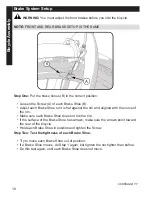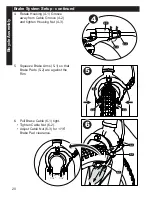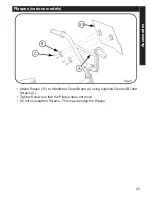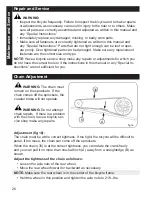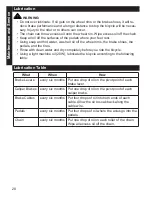
18
continued >>
Brake System Setup
WARNING:
You must adjust the front brakes before you ride the bicycle.
NOTE:
FRONT AND REAR BRAKE SETUP IS THE SAME.
A
B
Step One:
Put the brake shoes (B) in the correct position:
• Loosen the Screw (A) of each Brake Shoe (B).
• Adjust each Brake Shoe so it is fl at against the rim and aligned with the curve of
the rim.
• Make sure each Brake Shoe does not rub the tire.
• If the surface of the Brake Shoe has arrows, make sure the arrows point toward
the rear of the bicycle.
• Hold each Brake Shoe in position and tighten the Screw.
Step Two: Test the tightness of each Brake Shoe:
• Try to move each Brake Shoe out of position.
• If a Brake Shoe moves, do Step 1 again, but tighten the nut tighter than before.
• Do this test again, until each Brake Shoe does not move.
Bicycle Assembly
Summary of Contents for freewheel
Page 25: ...25 Accessories Notes ...















